Drawing landscapes can be a wonderful way to capture the beauty of the natural world but it can also be a bit of a challenge. However, by paying attention to just a few important landscape drawing tips, you can begin to create more compelling and realistic drawings.
For example, when drawing landscapes it is important to take into account the different elements that make up a landscape sketch. There are the physical elements, such as the sky, the ground, the vegetation and structural elements that make up the composition of your landscape drawing. But there are also environmental elements to consider, like how the light interacts with the landscape. The way light reflects off of different surfaces can help to create a sense of depth and realism in your landscape drawing.
Discover how to get better at drawing landscapes by learning how to deal with the physical and environmental elements of a landscape drawing. Get started with the fundamental drawing tips included below!
Areas that are further away need to be lighter in value

When you look at a landscape. You will notice that the areas that are furthest back in space are also the lightest in value. This becomes very clear when you look at mountains that are far off in the distance. You will notice that they are much lighter in value. Conversely, the parts of the landscape that are the closest to you, are darker in value.
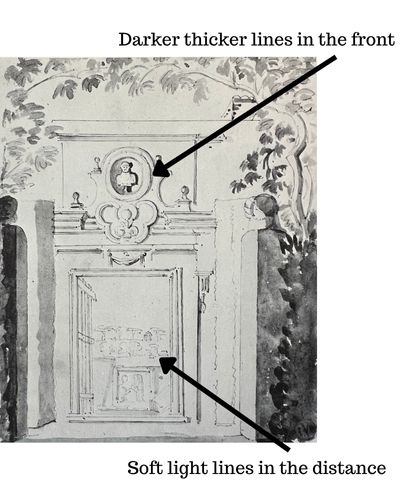
You can see this rule of nature at play in this drawing by Ingres. Notice how he made his lines very light and fine in the background areas of the drawing. This helps to make that background area feel like it is far off in the distance. In contrast, the lines in the front section of the landscape sketch, are much darker and thicker. Which helps to bring things forward, as you increasingly create darker and thicker lines closer to the front.

Make sure to measure your landscape drawing
If you want to get better at drawing landscapes, measuring is such an important aspect to landscape drawing (and drawing in general).
Marks or notations are helpful tools for figuring out where things are placed in your drawing. You can use dots like Ingres did or any other mark you feel comfortable with to help note measurements.
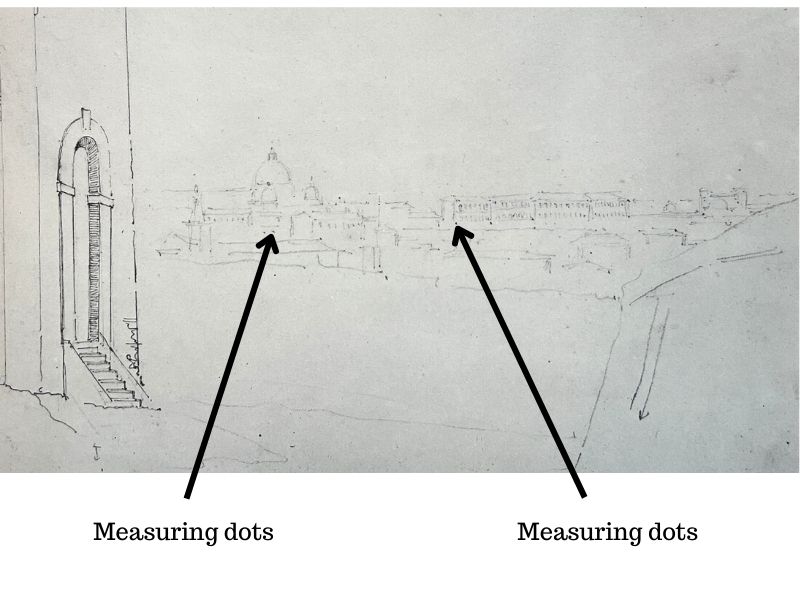
Try not to worry about ‘messing up’ your drawing with marks and notations. It’s more important to work towards getting accurate measurements for your drawing when landscape sketching, than to make it look pretty. Observing carefully and measuring will lead you towards creating a drawing that is strong, beautiful, and convincing to the viewer.
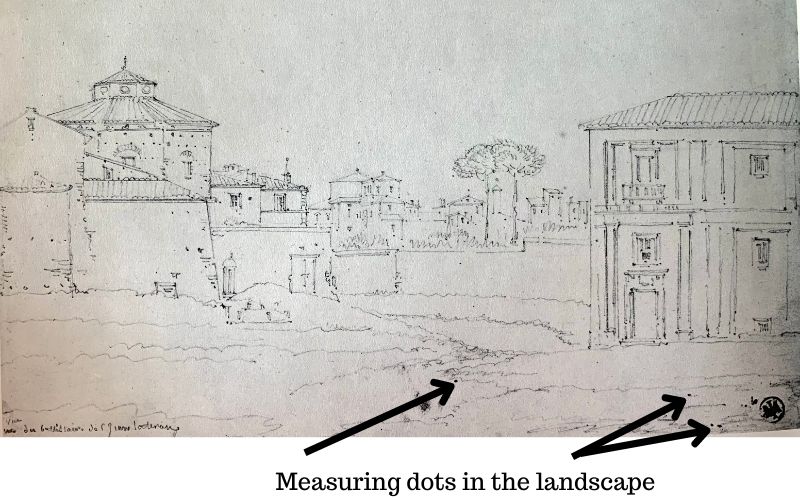
How to draw landscapes that incorporate buildings
A landscape drawing sketch can be more than just drawing fields, trees and rivers. You can incorporate buildings and manmade structures into your landscape drawing as well!
As a rule of thumb, man made structures have angular shapes while the natural parts of a landscape will be more fluid and organic. It can be a fun contrast the two together in a drawing.

However, because of the very definite rigid lines that buildings have. It is extra important to observe carefully and make accurate measurements. It shows through if you don’t.
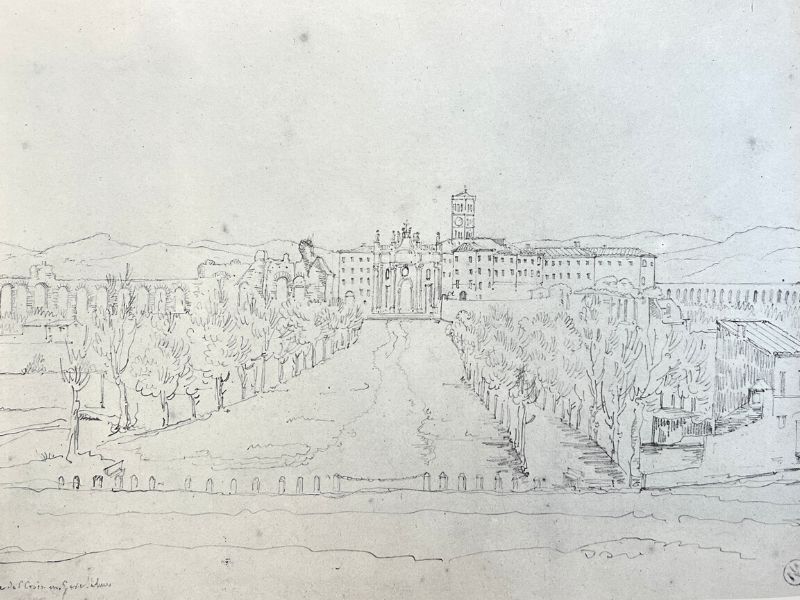
Here are some additional tips to help you with drawing buildings in your landscape drawings:
- Pay attention to the perspective of the building. This is especially important if the building is close up in your drawing.
- Make sure that the sides of the building are parallel to each other. This will create a sense of stability in your piece.
- Keep yourself from getting overly detailed when drawing buildings. Simplicity is key!
- Use a ruler if it helps you to create straight lines when drawing buildings. A ruler can also prove helpful when it comes to measuring and making sure areas are parallel to one another.
Find landscape drawing ideas that inspire you
Part of landscape drawing is cultivating drawing ideas for what to draw. There all sorts of different kinds of landscapes for you to draw inspiration from. One of the best things you can do for yourself is to take a sketchbook with you on your travels. Whether you are traveling more locally or half way across the world – a change of scenery is always fun and provides some fresh scenery for drawing.
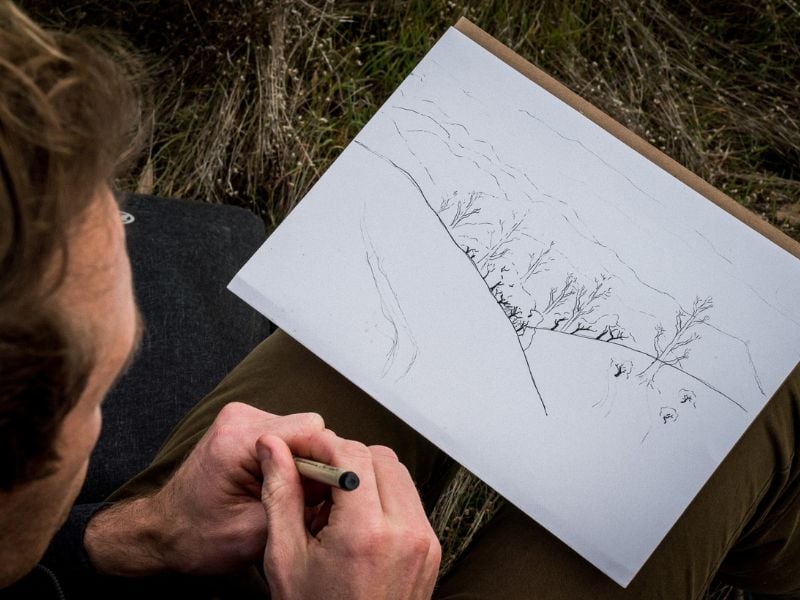
Here are some ideas for different kinds of landscapes you could draw:
Cityscape drawing – this could be a skyline view or a more close up view of buildings.
Clouds – Learn how to draw clouds in your landscape drawings! Or just draw clouds on their own.
When looking for inspiring scenery for drawing. The best landscape drawing subject matter, is that which inspires you the most and makes you excited to draw!
There are endless landscape drawing ideas and possibilities for different kinds of landscapes to draw. It is up to you to explore and find what you are most drawn to! Make a habit of carrying a sketchbook around with you so you can capture the different landscapes you encounter.
ALSO, if you’re also a painter…
Creating landscape drawing sketches like these, will be a creative lifeline for you. They will not only help you to capture landscape painting inspiration, but also help you to easily figure out the compositions you want to create.



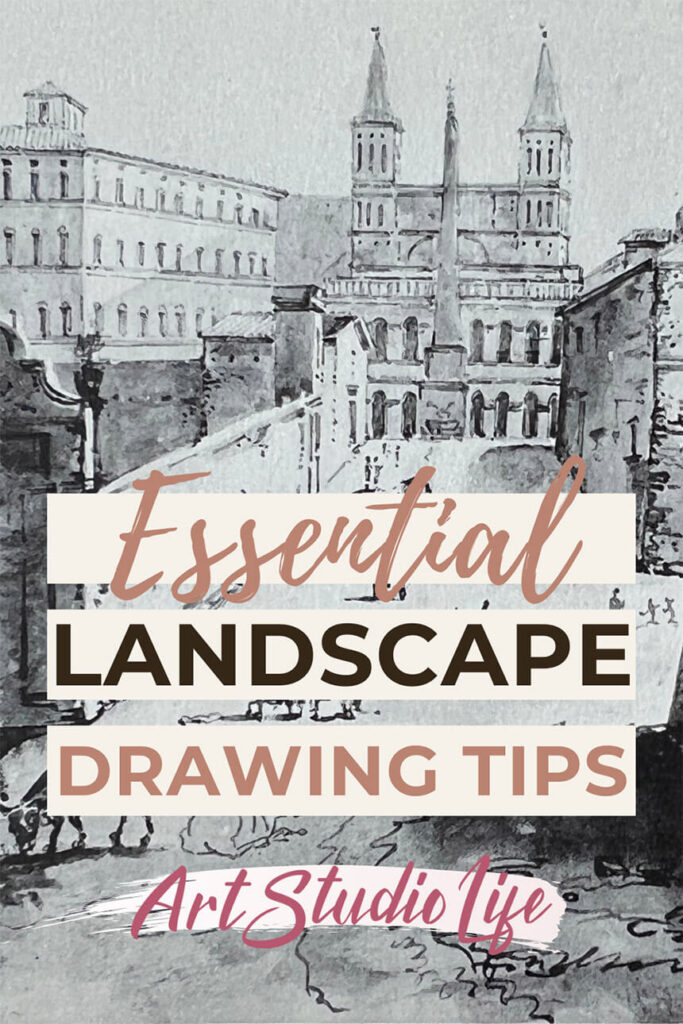


10 thoughts on “Landscape Drawing Tips: How to Draw More Realistic Landscapes”
Hi Elisabeth.
I have been drawing for a very long time but never a landscape. This will be a good one for me to practice with. Thank you so much for all your excellent help and support with everything.
My kind regards.
Mike D
Hi Mike, You are very welcome! Very glad to hear that this is helpful 🙂
Hello Elisabeth,
I download paintings that I like from the internet. I press a button to get the size in pixels. I divide the width in pixels by the length in pixels and I get say 0.80. I choose a canvas whose ratio is 0.80. Like 35/45=0.78, 40/50= 0.80, 24/30=0.80 etc…
I print the photo in color. Its width is say 20.1 cm, its length 25.1 cm. My canvas is 40×50 cm
I measure from the edge of the photo to the tree and I am 6 cm, and I am on the long side of the photo (25.1). The long side on the canvas is 50 cm.
6×50/25.1=11.9cm. The 6 cm on the photo correspond to 11.9 cm on the canvas. So I have a first point of reference.
In width if it is say 4 cm x40/20.1.
I thus have the abscissas and ordinates of the important points.
If the painting I’m copying has a foggy canvas background (it’s a forest landscape) where you can barely see tree trunks in the background barely visible because of the morning mist, I take, at the beginning, the landmarks of trunks and floor details. I paint with acrylic the background of the canvas. I wait 2 hours for everything to dry, I prepare a very liquid solution of blue and white in acrylic and I paint the canvas background with this solution with a large paintbrush. I do 2 or 3 passes and I have a foggy backdrop with barely visible tree trunks. When everything is dry I take the landmarks of the 1st plan and I can use acrylic or oil for this plan.
Paul Salmé
Hi Paul, Thank you for sharing your method of measuring to get accurate ratios when painting from images you find online. Its good to work from back to front as you described that you do – this works especially well for something like a foggy backdrop in a forest landscape as you mentioned. Very nice!
I’m not typically one who comments but this post was full of so much valuable information that I felt it important to say something. Thank you so much for all your wonderful and helpful posts!
Hi Sherri, You are very welcome! I am glad to hear this article was helpful for you. Thank you for sharing that 🙂
Thanks Elisabeth
You are welcome Dorian!
Thank you very much for such important tips to draw landscapes.
Next time, when I will love a landscape and think to draw it I’m sure I will take care of teachings that you put in this article
I am so glad this article was helpful for you! You are very welcome for the tips 🙂